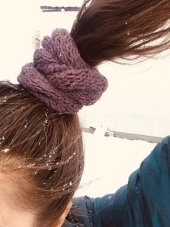
 4
4











 1
1




Trying to achieve self-reliance on a tiny suburban plot: http://gardenofgaladriel.blogspot.com
 3
3











 3
3











 5
5




Visit Redhawk's soil series: https://permies.com/wiki/redhawk-soil
How permies.com works: https://permies.com/wiki/34193/permies-works-links-threads
 1
1




"Also, just as you want men to do to you, do the same way to them" (Luke 6:31)

 2
2





 2
2




There is nothing so bad that politics cannot make it worse. - Thomas Sowell
Everything that is really great and inspiring is created by the individual who can labor in freedom. - Albert Einstein











Jay Angler wrote:
2. The Japanese do that "hand stitching thing" to attach an inner layer to the outfit - lot's of little stitches oriented in the direction that needs reinforcement - I've seen this, but never done it myself.
Jay Angler wrote:
Modern interfacing is non-woven and often involves glue, so "quilting" the cotton to the inside half on your waistband might imitate interfacing better than just stitching the edges as in your picture above. But only if you feel you need that degree of reinforcement - I'm suggesting a concept here, not deciding if your project requires it. If I was doing heavy work pants which I often clip gloves, hand tools etc to, I would think this a good idea. If I was doing a fancy outfit where the waste band needed to look clean and crisp, I also might do so.
Jay Angler wrote:
3. I would absolutely make sure that both the outer fabric and the cotton reinforcement have been washed and "pre-shrunk" so that you won't have one layer shrink differently than the other. I had a purchased shirt where that hadn't been done and the collar looked horrible.
.
There is nothing so bad that politics cannot make it worse. - Thomas Sowell
Everything that is really great and inspiring is created by the individual who can labor in freedom. - Albert Einstein






 2
2




Kristine Keeney wrote:
Jay Angler wrote:
2. The Japanese do that "hand stitching thing" to attach an inner layer to the outfit - lot's of little stitches oriented in the direction that needs reinforcement - I've seen this, but never done it myself.
That particular style of stitching is called pad stitching for Western/European sewers. It's a tailoring technique that tends to be thought very "fancy" or couture and is used for making certain that layers of fabric and/or padding don't shift around while worn. ...
"Also, just as you want men to do to you, do the same way to them" (Luke 6:31)







 1
1




Inge Leonora-den Ouden wrote:
Kristine Keeney wrote:
Jay Angler wrote:
2. The Japanese do that "hand stitching thing" to attach an inner layer to the outfit - lot's of little stitches oriented in the direction that needs reinforcement - I've seen this, but never done it myself.
That particular style of stitching is called pad stitching for Western/European sewers. It's a tailoring technique that tends to be thought very "fancy" or couture and is used for making certain that layers of fabric and/or padding don't shift around while worn. ...
In Dutch it's called 'doorpitten', at least that's what I remember my teacher in costume sewing taught me.
There is nothing so bad that politics cannot make it worse. - Thomas Sowell
Everything that is really great and inspiring is created by the individual who can labor in freedom. - Albert Einstein





















Kristine Keeney wrote:
Inge Leonora-den Ouden wrote:
Kristine Keeney wrote:
Jay Angler wrote:
2. The Japanese do that "hand stitching thing" to attach an inner layer to the outfit - lot's of little stitches oriented in the direction that needs reinforcement - I've seen this, but never done it myself.
That particular style of stitching is called pad stitching for Western/European sewers. It's a tailoring technique that tends to be thought very "fancy" or couture and is used for making certain that layers of fabric and/or padding don't shift around while worn. ...
In Dutch it's called 'doorpitten', at least that's what I remember my teacher in costume sewing taught me.
This just keeps growing and growing (much like my squash seedlings ...)=)
I did my standard three click research bit and thanked (mentally) my maternal grandmother for her patience.
https://external-content.duckduckgo.com/iu/?u=https%3A%2F%2F2.bp.blogspot.com%2F-8FJwdJW7p3s%2FT4Z8SRJA4HI%2FAAAAAAAAAng%2FlYRleKKd2mw%2Fs1600%2FIMG_1263.JPG&f=1&nofb=1
It seems, from the sites I was able to pull up (in said three click research), Doorpitten is a cross between the Italian's gift to interesting fabric design - trapunto, and the fancier forms of quilting.
...
"Also, just as you want men to do to you, do the same way to them" (Luke 6:31)











There is nothing so bad that politics cannot make it worse. - Thomas Sowell
Everything that is really great and inspiring is created by the individual who can labor in freedom. - Albert Einstein

|
How do they get the deer to cross at the signs? Or to read this tiny ad?
Freaky Cheap Heat - 2 hour movie - HD streaming
https://permies.com/wiki/238453/Freaky-Cheap-Heat-hour-movie
|






